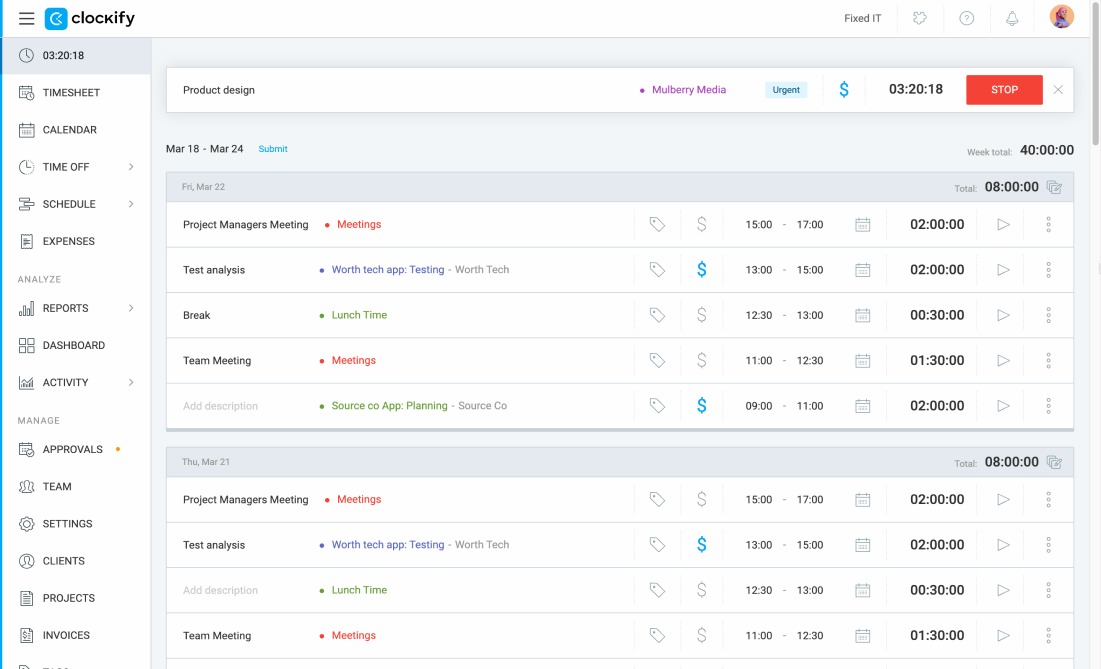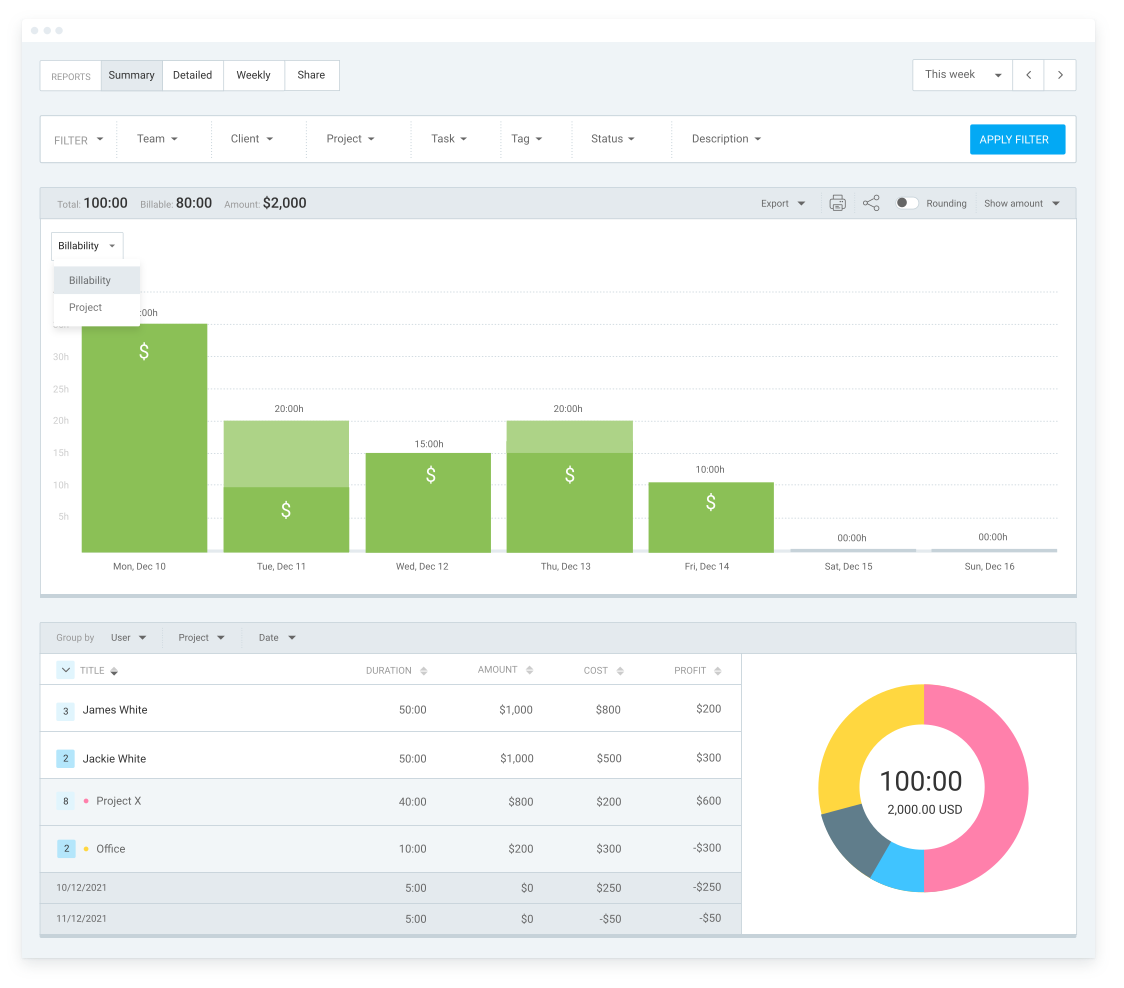We’ve all probably heard of employee time tracking at some point.
But how much do we really know about it?
Some say that it increases employee efficiency. Others believe it hinders at-work productivity and lowers morale.
But which is just a misconception, and which is a fact?
If you want to find the real truth about 4 common time tracking myths, stay tuned.

Myth #1: Time tracking is about micromanagement
When employees hear “time tracking,” some immediately think of micromanagement.
But why is that?
Well, employees fear their every move will be constantly questioned and they will lack autonomy at work.
Just imagine the frustration. Not only do you have to put in effort to complete your tasks, but now you also have to justify every minute you spend working on them.
I guess it’s understandable for employees to have such concerns, especially if they know little about time tracking.
The truth: Time tracking is about efficiency
Employee time tracking isn’t about monitoring what employees did that last hour on Wednesday.
Instead, it helps everyone do their job better and easier.
By tracking how long it takes employees to complete tasks, managers can spot if something is holding their team back.
For example, supervisors can see if an employee is stuck on a particular task and help that employee finish the task faster.
Talk about a win-win situation.
Time tracking also helps employees understand where their time goes and whether they spend it wisely.
Shockingly, statistics on wasting time at work reveal that “31% of workers waste at least one hour at work every day.” And, the worst part is, most of them aren’t even aware of it.
When employees track their time spent on activities, they can see if they’re spending too much time answering emails or attending unnecessary meetings.
Then, they can reduce such or similar time-wasters and be more productive.
💡 CLOCKIFY PRO TIP
If you need an easy way to keep track of your team’s productivity, make use of these free employee productivity report templates:
Myth #2: Time tracking leads to burnout
When employees think of time tracking, it may prompt them to believe that their performance will be measured by how many hours they work.
That’s when a nerve-wracking scenario starts playing out in their head: Employees imagine themselves glued to the chair, working long hours day after day, terrified that they still haven’t tracked enough time.
Eventually, exhaustion and anxiety start taking over their body and mind, leading to burnout.
While employees may think that time tracking will only stress them out, it’ll all change once they realize the real point of time tracking.
💡 CLOCKIFY PRO TIP
To measure employee performance with ease and let them know where they could improve, use employee performance report templates:
The truth: Time tracking helps managers create realistic deadlines
Looking at it from another angle, time tracking actually helps managers reduce employee stress at work.
By tracking the time employees spend on tasks, managers can see how their team handles different tasks so they can set deadlines accordingly.
This way, employees get just enough time to finish whatever they’re working on.
And, because they don’t have to chase unrealistic deadlines, they’re less stressed and happier as a result.
Myth #3: Employers don’t need to track employee work hours
Some employers believe they don’t need to track their employees’ work hours. More precisely, they think they aren’t legally required to do so.
We’ll say it right away — this is another misconception.
And a dangerous one, for that matter.
The truth: Employers are legally obligated to record work hours
In the US, employers are required to record employee hours worked, as the US Department of Labor warns us. The same rules apply to employers under the jurisdiction of the Canadian Government.
When it comes to EU countries, such as Austria, Finland, Portugal, and others, they also have their own timekeeping regulations.
In other words, not keeping an accurate record of each of your employees’ work hours can get you into trouble — and that’s the only truth. For example, you may face financial penalties.
💡 CLOCKIFY PRO TIP
If you want to track the time your employees spent working and when they were absent, you can use some of these employee attendance templates. You can download, customize, and fill them out — all for free:
Myth #4: Time tracking takes too much time
Imagine you’re using paper timesheets to track your employee work hours.
Every workday, employees need to set aside time to fill out the timesheet, which they naturally find burdensome and, ultimately, time-consuming.
But they’re not the only ones finding time tracking impractical.
As an employer, you also have your own duties:
You have to ensure everyone puts in their time — since employees often forget it. On top of it all, you have to check that everyone has filled out the timesheet correctly.
Just thinking about this makes your head explode.
So yes, time tracking indeed sucks up both your and your employees’ time.
But ONLY if you track time by using outdated methods — such as pen-&-paper or spreadsheet time tracking.
The truth: With time tracking tools, time tracking is efficient and accurate
Thanks to employee time tracking software, we can finally move away from time-consuming and error-filled paper timesheets.
What’s more, time trackers like Clockify offer different options to track time.
Employees can start the timer and track their time spent on tasks and projects in real time. Alternatively, they can add hours manually via timesheets.

When employees finish tracking time for tasks in Clockify, managers can see and analyze all tracked time in Reports.

Using a powerful tool like Clockify to track employee time is far superior to other time tracking methods — for several reasons.
One reason is that it makes time tracking a breeze and provides clear and accurate data.
On top of all that, Clockify offers a free plan with many useful features. However, if you want some additional features, you can upgrade to one of the affordable paid plans. In case you want to use Clockify together with two more apps — a team chat and a project management app — you may get them all at a special bundle price and save 53% on subscriptions.
If Clockify’s amazing options have piqued your interest, don’t wait another second.



